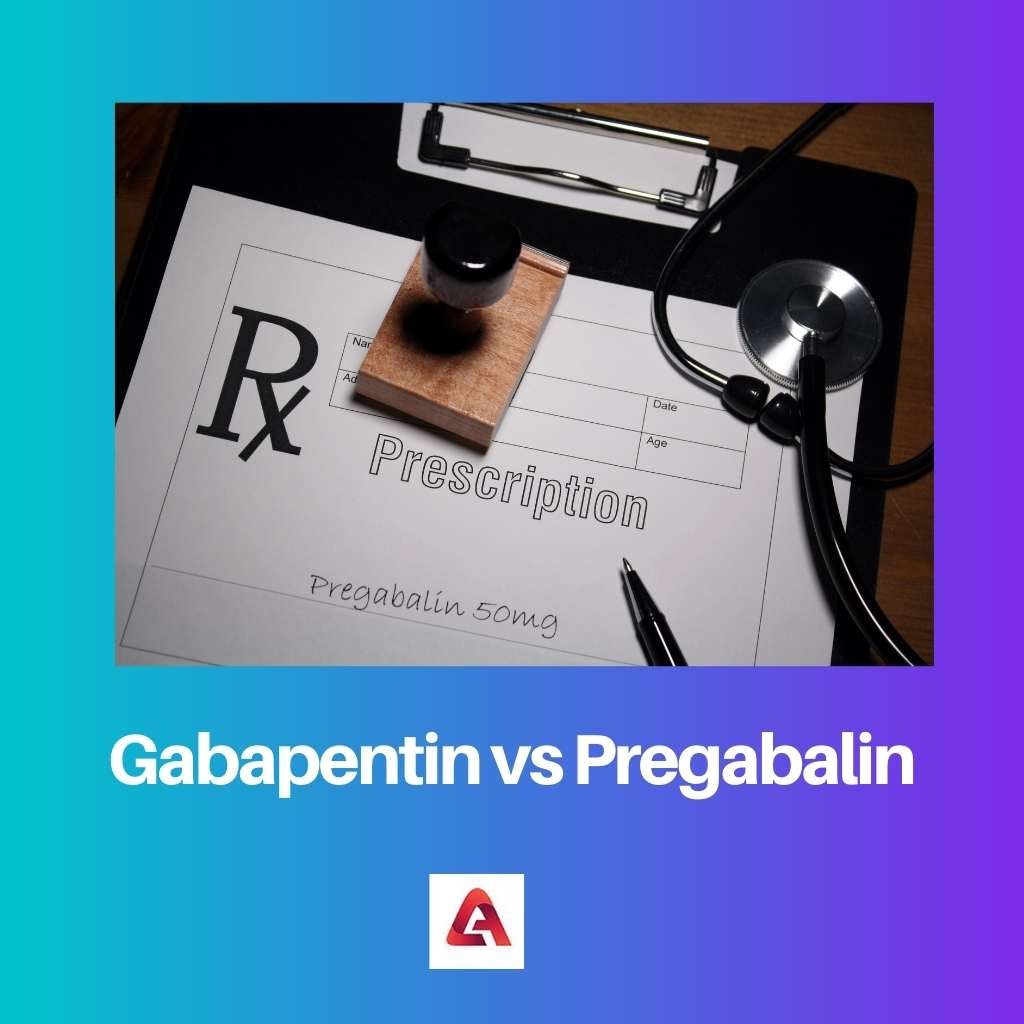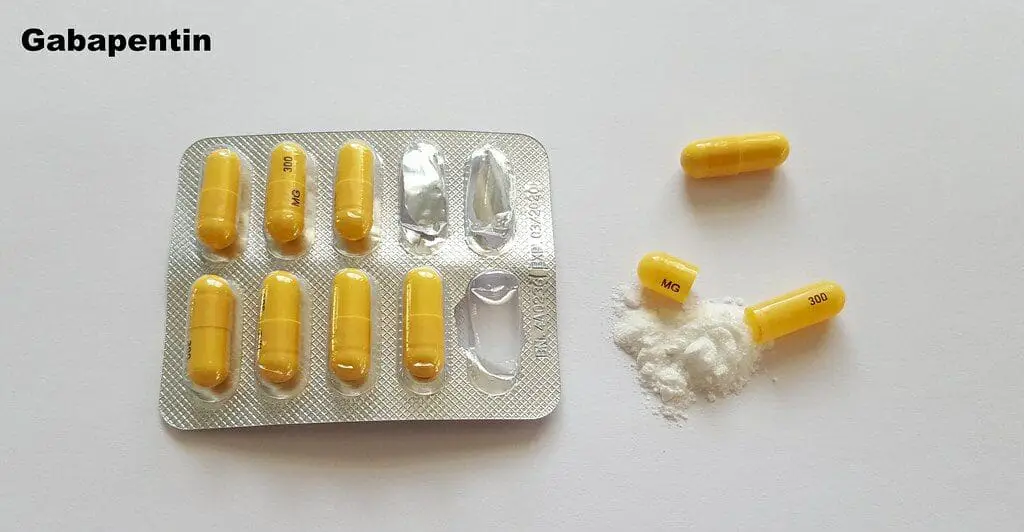Gabapentin and Pregabalin are anti-epileptic drugs used to control epilepsy and nerve discomfort. Anti-epileptic medicines are a class of medications intended to cure epileptic fits.
They are also being used more in treating bipolar illness and borderline personality disorder because of their mood stabling properties.
Key Takeaways
- Gabapentin and pregabalin are both anticonvulsant medications, but pregabalin has a stronger potency than gabapentin.
- Gabapentin treats various types of seizures, nerve pain, and restless legs syndrome, while pregabalin is primarily used for neuropathic pain, fibromyalgia, and generalized anxiety disorder.
- Pregabalin has faster absorption and higher bioavailability than gabapentin, leading to more predictable effects.
Gabapentin vs Pregabalin
Gabapentin was first approved by the U.S. Food and Drug Administration (FDA) in 1993 for treating seizures. Side effects may include dizziness, drowsiness, fatigue, and coordination problems. Pregabalin was first approved by the FDA in 2004 for treating neuropathic pain and seizures. Side effects may include dizziness, drowsiness, dry mouth, and blurred vision.

Gabapentin belongs to the anticonvulsant drug family. Gabapentin capsules, pills, and oral solutions are prescribed with other drugs to assist patients with epilepsy and different types of seizures.
It relieves seizures by reducing aberrant brain activity. It is also used to control neuropathic discomfort. Gabapentin reduces discomfort by changing how the brain senses pain.
Pregabalin treats neuropathic pain in the limbs, wrists, fingers, thighs, toes, or soles in people with type 2 diabetes and postherpetic neuralgia.
Pregabalin pills and liquid solutions are usually used to treat fibromyalgia and to alleviate nerve discomfort induced by a spinal cord injury.
Comparison Table
| Parameters of comparison | Gabapentin | Pregabalin |
|---|---|---|
| Use case | Peripheral neuropathic pain and Migraine prophylaxis | Peripheral and central neuropathic pain |
| Dose Range | 1200-1300mg/day | 300-600mg/day |
| Time to Cmax/Bioavailability | 2-3 hours/60% | 1 hour/>90% |
| Potency | Less potent | 2- 6 times more potent |
| Half-life | 5-7 hours | 6.3 hours |
What is Gabapentin?
Gabapentin is a prescription medication. It is accessible as an oral pill, an instant pill, prolonged pill, and a liquid solution. The brand-name medicine Neurontin contains gabapentin oral capsules.
It’s also accessible as a generic drug. Generic drugs are frequently less costly than brand-name prescription drugs. In certain circumstances, the brand-name and generic versions of the same medicine may be offered in different versions and intensities.
Gabapentin belongs to the anticonvulsant medication class. A drug class is a set of pharmaceuticals that function similarly. These drugs are frequently used to address comparable conditions.
It is unclear exactly how gabapentin functions. It appears to prevent the increase in pain sensitivity with postherpetic neuralgia. In the case of seizures, it may affect the impact of calcium.
Gabapentin pills, capsules, and oral solutions are consumed two to three times per day, with or without meals, with 8 ounces of water for optimal results.
These medications must be consumed at periodic intervals throughout the day and night, with a maximum of 12 hours between consecutive doses. The extended-release tablet is consumed daily with food.
Gabapentin is also used to cure menopausal symptoms like rapid and robust feelings of fever and sweating in women undergoing breast and prostate cancer treatment, as well as those who have gone through menopause and hormone imbalances such as the termination of periodic menstrual cycles.

What is Pregabalin?
Pregabalin is a prescription drug. It comes in three configurations: pill, liquid, and extended-release tablet. All forms are administered orally. Lyrica is the marketing term for the pregabalin oral dosage form.
Pregabalin oral tablets can be combined with other drugs. As a result, you may need to take it in tandem with certain other medicines. Pregabalin is a Schedule II-restricted drug. Your doctor will regularly monitor how you take this medication.
Pregabalin oral pill is used to treat nerve pain caused by peripheral nerve damage caused by diabetes, shingles, or spinal cord injury, fibromyalgia, widespread discomfort, and partial-onset seizures in patients of age one month and older when combined with other seizure medications.
Pregabalin oral pills may induce vertigo, drowsiness, and blurred vision. It might impair your capacity to think, hear, or manoeuvre.
You should not drive, operate equipment, or perform other duties that require awareness unless you know how this medication impacts you. Other adverse effects of Pregabalin include dry mouth, excess weight gain, and swelling of the hands or feet.
If the adverse symptoms are modest, they go away in days or weeks. If symptoms worsen or do not go away, see a medical professional.
Pregabalin oral capsule may interfere with any drugs, vitamins, or herbs you take. An interaction occurs whenever any substance modifies how a medicine acts.
This can be hazardous or hinder the medication from functioning correctly.

Main Differences Between Gabapentin and Pregabalin
- The binding affinity and potency of gabapentin and pregabalin differ. Gabapentin has a weaker sensitivity to the alpha-2-delta enzyme when compared to pregabalin, and hence pregabalin provides more significant relief from acute nerve pain.
- Gabapentin outperforms pregabalin in reducing leg pain intensity while causing fewer side effects.
- Gabapentin does show some side effects. However, pregabalin is more likely to induce adverse symptoms such as dry mouth, constipation, swelling, breast enlargement, or weight gain.
- Gabapentin has a slow absorption rate and functions slower than pregabalin. Consequently, gabapentin requires 3 to 4 hours to reach maximum levels, whereas pregabalin reaches maximum levels within an hour of dosing.
- Because of its slower absorption and effect commencement, gabapentin has a lower addiction risk than pregabalin.
- Although both medicines have comparable interactions, gabapentin may interact with non-steroidal anti-inflammatory drugs such as ibuprofen, naproxen, and diclofenac. In contrast, no such interactions were observed in the case of pregabalin.






